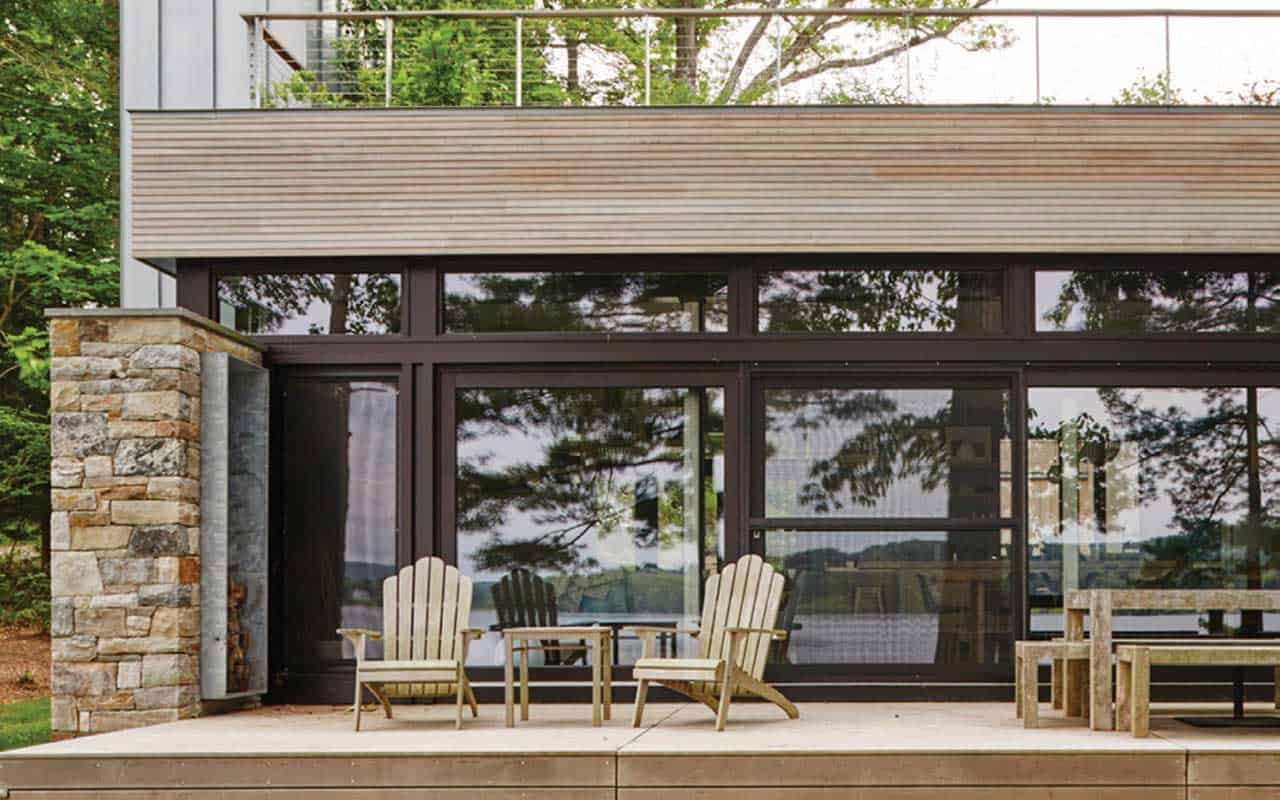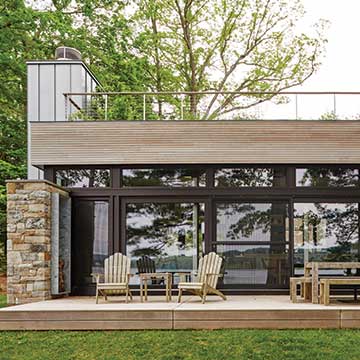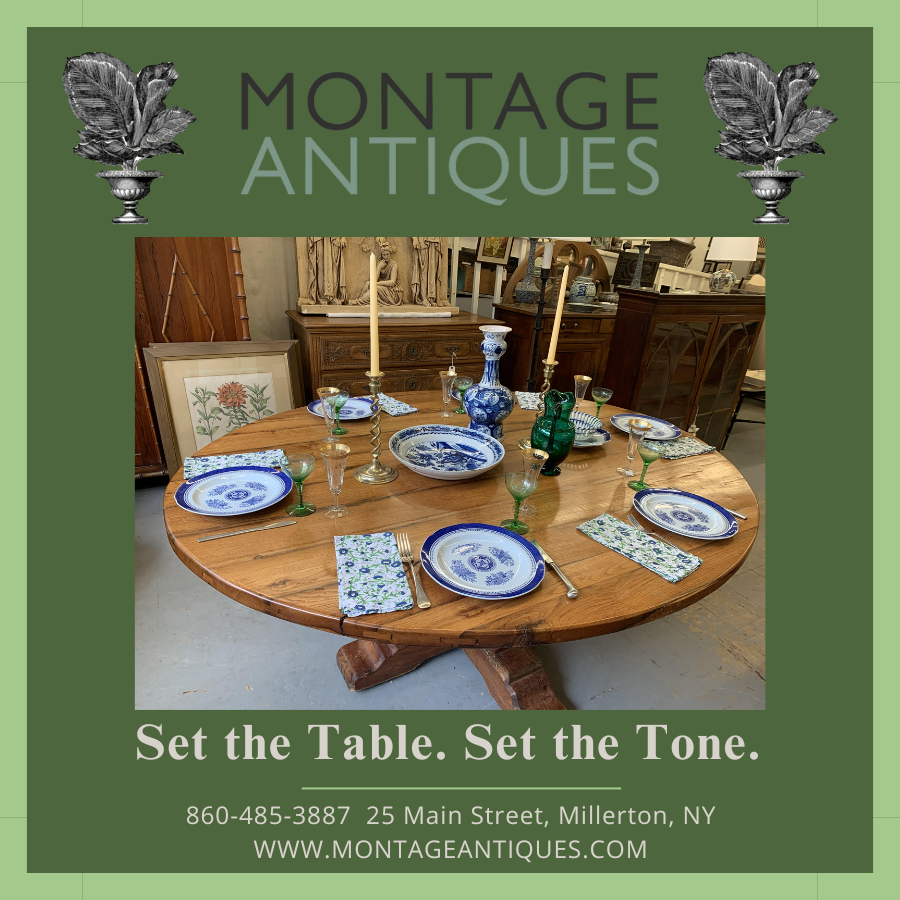This Month’s Featured Article

Form, Function, And…
 When it comes to the homes that define our lives, those that house the families who bond us eternally to the landscape as well as the spaces that we occupy every day, art can be defined by both the creation of structure as well as the recreation of character.
When it comes to the homes that define our lives, those that house the families who bond us eternally to the landscape as well as the spaces that we occupy every day, art can be defined by both the creation of structure as well as the recreation of character.
For architect John Allee, principal architect at Allee Architecture + Design (AA+D), it is that linear movement that connects us all with the elements of design. After earning his Master’s Degree in Architecture from the University of Texas, Allee spent years in the mecca of architectural design, gaining extensive experience on residential as well as mid-sized institutional projects in Manhattan. During his tenure at Tod Williams Billie Tsein Architects, John was involved in the Cranbrook School Natatorium (Michigan) and the Folk-Art Museum (New York). At Polshek Partnership he primarily worked on the expansion and renovation of the New York Hall of Science as well as the master plan for the Bronx Botanical Gardens.
Since its inception in 2002, AA+D (based in Millerton, NY, also with an office in Martha’s Vineyard), has completed over 200 residential and commercial projects and continues to have a strong portfolio of work. John’s centralized focus revolves around a holistic approach to the practice of architecture and thoughtful collaboration with clients. His expertise ranges from concept design to construction management, and is currently providing services in the Hudson Valley, Northwestern Connecticut, and on Martha’s Vineyard being licensed in NY, CT, MA, NJ, and CO. Despite the breadth of his expertise, Allee maintains a personal connection with style, struggle, and a landscape that informs conceptual evolution.
How did you find your way into the architectural field? Have you been something of a designer your whole life?
I studied at the University of Texas Austin where I earned my Masters in Architecture. After which, I of course found myself in New York City where architectural design seems geographically inherent, and is also where I happened to grow up. My parents owned a home locally and I ended up spending a lot of time in this area, eventually I fell in love with this landscape ironically for many of the same reasons designers fall in love with the big city. The landscape informs the local architecture in much the same way New York’s skyscrapers define the city’s monumental character.
After college, I lived in the area while I worked in construction and made small furniture. I remember being on the job site in the middle of winter and trying to pull an old nail out of a beam with a catspaw and, as often happens, the hard metal came down on my finger. It was then I decided that my design ambitions were better focused on the conceptual art – which I have found still drives my passion today. After briefly working as a currency trader in Norfolk, CT, while attending grad school in 1994, I finally resolved my commitment not only to the architectural field, but to finding my design niche from within.
It is well known that any career field where intuition and design are fundamental can be exhaustive and challenging. How did you find yourself in this space? Did anything change the way you felt about your designing ambitions?
You know, growing up everyone in my life told me I was going to be an architect. Somehow, intuitively, that gave me a certain level of confidence needed in such a competitive field. I think my design philosophy helped to guide me as well. I have always wondered if I should have been a structural engineer as well as an architect. Growing up and even today, despite the creative field I work in, I have maintained something of a logical mind – a vertical way of thinking if you will. Undoubtedly, the nature of architectural design functions in the opposite direction of logic in many ways. These struggles stem from one common truth in architecture as well as design – there is no right answer. There are good answers, there are better answers, but there is no absolute solution to creative design. The artistic space in between is where logic and creativity meet. In this way, there is always a struggle between the absolute nature of numbers and the spiritual lawlessness of artistic character.
How do you find a medium between function and design?
I think it exists simply within the function of any project. As an architect I develop concepts based on a “wishlist” that we develop with the client. We call that list a program. The program identifies the “problem” that our design needs to solve.
In practice, it is making concepts a reality, which is the really special part of any kind of art form. When people think of structural engineers, they mostly think of large-scale endeavors like bridges and skyscrapers and when I worked for large firms in the city, I had fun being a part of those kinds of projects. We worked on a renovation and an addition to the New York Hall of Science during my time in Manhattan, which was a really inspiring endeavor. Despite the competitive nature of the field, especially in New York, I loved everything about that job and the team I worked with. It was one of those projects that really tested the marriage of form and function, it was a challenge whose difficulty inspired my ambitions. Having a small group of people, driven by the same passion to mold visual conception into a physical reality, it was an eye-opening experience.
You mentioned you had always wanted to find your way back to the area since childhood. How did you eventually come to call this area home?
Between having my first child, wanting to start a family of my own, and of course 9/11 to some degree, it just felt like time to reinvent myself away from the city. Like most of the folks who live here, the landscape and the history of this area can be a natural conduit for inspiration.
I had taken a job on the coast of Connecticut around that time and though that firm didn’t really inspire me, I knew the track that would eventually lead to a firm of my own needed to travel a certain way and take a certain amount of time before I could really establish myself. There’s a lot that goes into making this career a reality, similar to the projects we design.
The romantic notion that every architect is sitting down with a carpenter’s pencil and sketching out each idea that eventually comes to life is simply not a reality. Like any job, you must begin somewhere and for the architect that usually means programming designs for things like toilets and other small-scale pieces. Still, at any level of this craft, I have found moments of excitement and what I might call the epiphany of design, and the excitement of bringing concepts to life.
In the New York Hall of Science, I was responsible mostly for stairs, elevators, and a few other odds and ends. My moment, in the midst of this seemingly tedious grind, came when I figured out how to make the loading dock in the back of the building function. I remember all of the senior designers above me simply punting on this thing. It was to the point where everyone had kind of given up thinking about it because of the space and difficulty of the design that was required to allow for trucks to get in and unload. When I finally figured it out, I felt like I had just gotten my first base hit in little league. The design wasn’t sexy by any means, but I had combined function with concept to create a physical, usable structure, that’s what makes any artist inspired.
What would you call your style today? Is it a product of what you took from your time with large firms or have you developed something wholly unique?
I would say my style is theoretically modern and that was something I cultivated during my time discovering the field in graduate school. There are local architects that specialize in designs that are more traditional and that’s great for the area and there are formulas for that kind of style.
What I learned during my time both in school as well as in the field ultimately comes back the balance of vertical and lateral thinking, form versus function, answers versus concept. I attempt to think of things conceptually that might have nothing to do with the building at all. In one of the first classes I ever attended in graduate school, I was fortunate enough to have a professor who taught me how to properly visualize projects. Basically, you can design a project around what you like visually or stylistically, but a project that has integrity achieves another level – you almost create your own metaphor for it. Establishing your own vision, one that holds its idea through integrity, helps you make decisions and that’s the hardest aspect of architecture – making decisions. Having a strong concept opens the door to the rest of the project and it’s so rare.
Have you found yourself building out a project from one elusive concept? How does being in this area help that process?
Some yes, but I would like to do more obviously. When it comes to houses, finding a metaphor or an abstract concept is a little harder to achieve. Sometimes I’ll have my own internal metaphor for a project that stays with me in secret and comes to fruition from completely within myself. Again, the landscape of the Hudson Valley and of Northwestern Connecticut feeds my inspiration. A nice piece of property can inspire all sorts of things, for example I can visualize reading a book underneath a maple tree and from that comes the idea of shade. Shade can be visualized by a roof and thus the roof becomes the focal point from which I establish the rest of the design. If I can grasp onto one design element and work from that concept, the project becomes a more lateral process and ultimately a better overall experience.
Where I was, living and working in that sphere, I could have stayed there and worked on large-scale projects and learned a lot while doing so. But truthfully, you learn from every project and with new materials and new technology coming every year, you must continue to learn and evolve. I think every designer, whether it’s architecture or otherwise, comes to a point where they arrive at a crossroad. Do we want to be self-contained and settled in the style we have established? Or do we want to grow out into a larger entity.
I would like to leave a legacy that represents something beyond simply myself or my style. I love this area for its character, history, and what it represents to the rest of the world as a cultural institution. Renovating the auditorium at the Hotchkiss School for example was a project that allowed my concepts to become a part of the fabric of this community and that’s the kind of legacy I want to leave.
Truthfully, it matters less to me that I subscribe to a specific style each time, I just want to do things that are interesting.
Do you see any stylistic trends happening locally? What would you like to see from AA+D moving forward?
It’s interesting because I sometimes refer to our area as the dwelling of America. Especially now, more and more folks are finding respite or settling permanently in our area and though when we think of homes in our area, we may visualize a certain aesthetic, it’s important to remember that modern is not a dirty word.
There are some incredibly rustic homes in our area that have modern elements. Wanting something traditional in concept does not mean an inherent need to abandon the concepts of open space and light. This is the perfect landscape, and possibly the perfect time, to marry colonial and modern concepts.
At the end of the day, the greatest joy comes from collaboration and that is one of the hallmarks of our community. Working with homeowners, builders, and suppliers is what is most crucial to the design process. In ancient Egypt, because of the scale and spiritual importance of the Great Pyramids, the architect was considered a deity – so that set us up for failure pretty early on. The master builder concept lasted all the way through to the 19th century.
Thankfully, today the collaborative effort has become the standard in both design and construction. I really love working with clients and builders, and that is what I visualize most moving forward. Whether it’s a house or an institution, the space we occupy will forever occupy and represent pieces of who we are as individuals and communities. •
To learn more about John Allee and Allee Architecture + Design, you can call (860) 435-0640 or visit them online at www.alleedesign.com.


